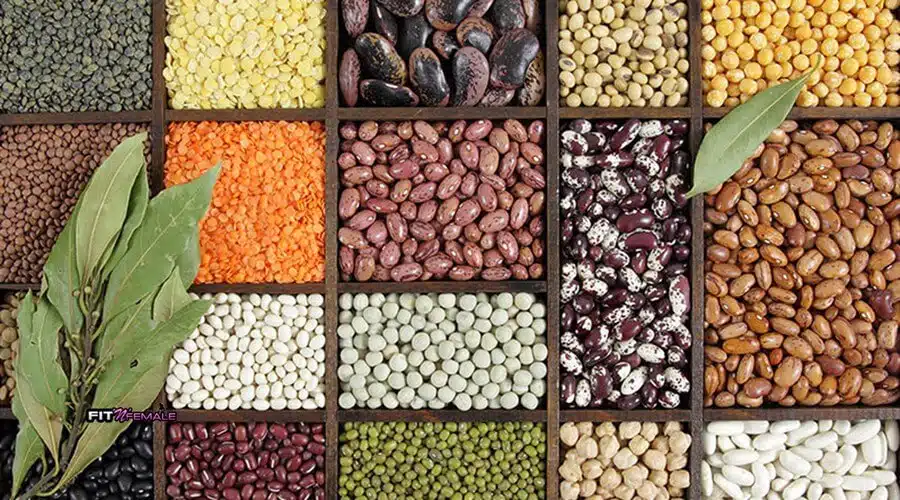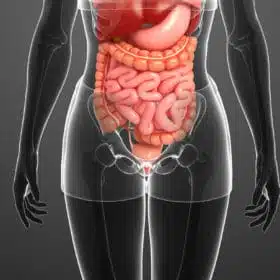For every athlete who eats a vegan or vegetarian diet, the question arises where to get her protein. When it comes to muscle building, almost everything on the Internet revolves around lean meat and poultry. Vegetable protein sources almost never make an appearance.
For a food to be considered a "complete protein source," it must contain all nine essential amino acids (EAA). Chicken, fish and beef can provide this and have therefore been considered the only way to get protein from food for muscle and strength building for decades. Vegetable proteins are often pushed into the background because they do not contain all nine EAA. But is this even necessary?
No, not every bite has to be a "complete protein source". As long as you are not deficient in any of the EAA, your body will use everything in your food. Therefore, make sure you have "all nine" together. You can do this by combining and varying a variety of plant-based protein sources.
Why should you choose vegetable rather than animal proteins? They are simply better for your organism in general. People with a plant-based diet usually have a lower risk of suffering from heart disease, obesity, diabetes and high blood pressure. Ultimately, they have a longer life expectancy.
But where do you find the plant-based sources for your protein?
Grains
Grains are one of the staple foods of athletes because of the healthy carbohydrates they contain. They are not considered a source of protein. Some types of grains, such as white and brown rice, actually have little protein. Wheat gluten or seitan, on the other hand, contains about 63 grams of protein per 100 grams. Seitan can also become a "complete" protein if you cook it with soy sauce. Basically, most grains can be prepared with beans or legumes to get a complete EAA profile. Usually, delicious combinations are created this way (beans and rice, peanut butter toast or oatmeal, hummus pitas, etc.) In addition to protein content, grains are an excellent source of fiber, B vitamins, and minerals such as iron and magnesium. Other popular protein-rich grains include: Wild Rice (7 g protein / cup), Sliced Oats (12 g protein / 100 g) and Couscous (6 g protein / cup).
Nuts
Nuts are often considered "only" excellent sources of omega-3 fatty acids, antioxidants, vitamins and minerals. But they can actually also be an excellent source of vegetable protein. Nuts such as almonds and pistachios contain 18 grams of protein per 100 g and a comparatively small amount of saturated fat. Aside from the protein content and the omega-3 essential fatty acids that are so healthy for the heart, nuts are an easy snack for in-between meals, as most varieties can be eaten either raw or in the form of nut butter. Products like almond butter (7g protein / 2 tbsp) and cashew butter (6g protein / 2 tbsp) are a good alternative to peanut butter or other plant-based protein spreads.
Although they lack some of the essential amino acids, nuts or nut butters along with grains can become complete sources of protein.
Beans and legumes
Contrary to popular belief (and its own name), peanuts are legumes. Due to their underground growth, they belong to the same family as lentils, chickpeas and soybeans, among others. Although soybeans are the only legume that can be considered "complete," peanut butter or chickpea hummus can be eaten with whole grain bread or low-fat chips to ensure intake of all essential amino acids.
Here are the most popular legumes and legume products rich in protein and fiber: Lentils (18 g protein / cup), peanut butter (8 g protein / 2 tbsp), hummus (3 g protein / 2 tbsp), chickpeas (15 g protein / cup) and soybeans (22 g protein / cup).
You'll be hard pressed to find a person on a vegetarian diet who doesn't eat beans and legumes. There's a good reason for this: beans come in many different shapes, sizes and flavors, and are often rich in protein, fiber, B vitamins, potassium and calcium. Although they don't contain all nine EAAs, when combined with certain grains (e.g., rice) they can become "complete" sources of protein.
The most commonly consumed types of beans with high protein content include: Black beans (15 g protein / cup), pinto beans (15 g protein / cup), field beans (13 g protein / cup) and kidney beans (15 g protein / cup).
Seeds (seeds)
One of the few plant sources that can be called "complete" protein is quinoa. It is low in carbohydrates and calories and is an attractive alternative to rice, containing 24 grams of protein per uncooked cup. In addition, quinoa provides nearly 50 % of the recommended daily allowance of iron and has twice as much fiber as most grains.
Other seeds with high protein content include: Buckwheat (23 g protein / cup), hemp seeds (10 g protein / ml), Chia seeds (5 g protein / ml), sunflower seeds (15 g protein / 100g) and pumpkin seeds (5 g protein / ml). For all nine EAA to occur, seeds can be combined with legumes such as lentils or chickpeas.
Nutritional yeast
Nutritional yeast is perhaps the best kept secret on this list. It's another "complete" plant-based protein source. As the name suggests, nutritional yeast is packed with nutrients at a similar consistency to Parmesan cheese. Although it's actually harvested from molasses, it's rich in zinc, vitamin B12, folic acid and - you guessed it - protein. Nutritional yeast contains 42 grams of protein per 100 grams and is low in fat, sodium and sugar, which is rare enough on its own. That being said, nutritional yeast is known for its cheesy flavor. Therefore, it can be added to almost anything from pasta to popcorn for a delicious sauce or dip.
Food supplement powder with vegetable protein
In addition to eating foods from the above categories, many people may find it useful to supplement their protein intake by regularly taking plant-based protein powders. Many strength athletes often confuse supplements with main sources of nutrients. These supplements are only meant to supplement and enhance. For many people, too high a dose can prevent them from reaching their potential. This is especially true for athletes who consume mostly plant-based protein. Plant-based protein sources are on the rise, and there is already no shortage of great-tasting, easy-to-digest options.
Aside from plant-based protein powders that contain a "complete" amino acid profile, protein isolates from peas, wheat, hemp, soy and rice are used to satisfy EAA intake.
There are endless ways for athletes to get their protein from plant sources. Although many people still believe that every protein source must be complete, literature already exists that says otherwise. You've learned about many reasons to choose plant-based protein sources. Hopefully, you've now discovered at least one for yourself.




